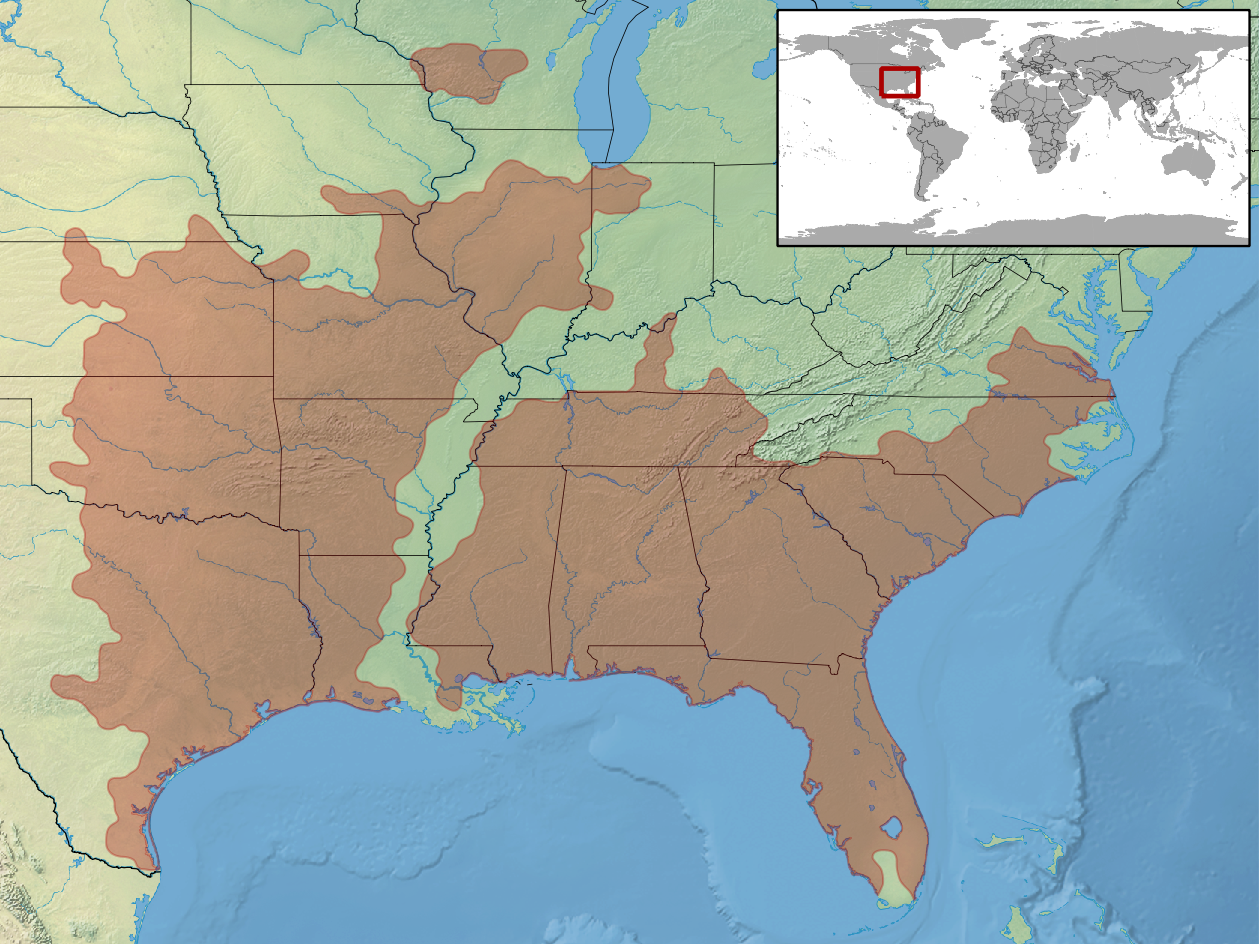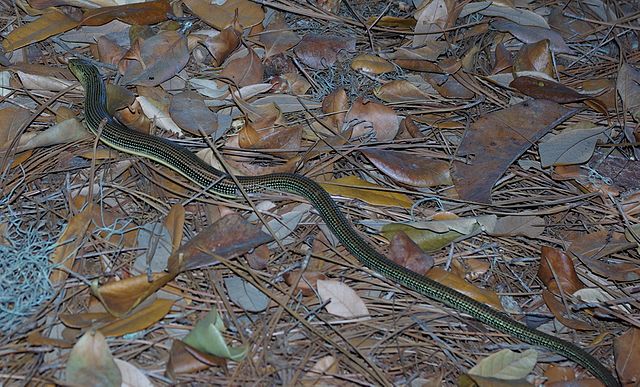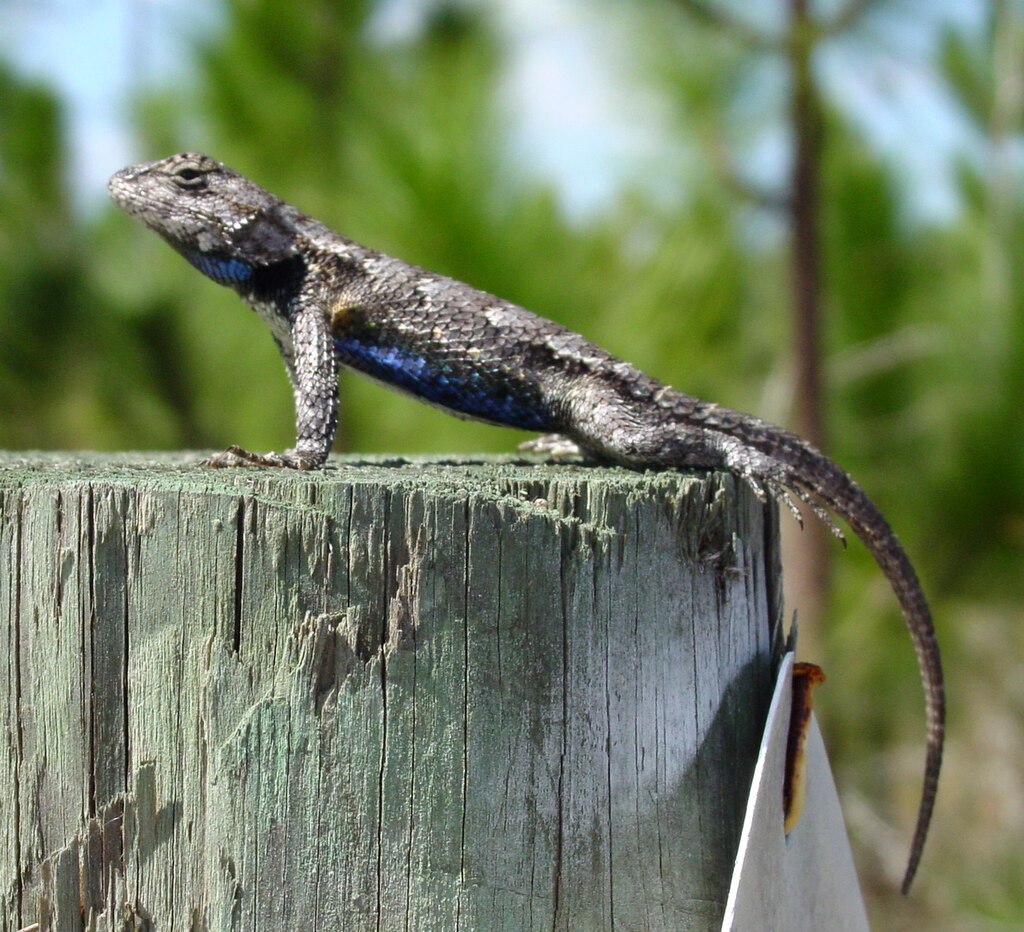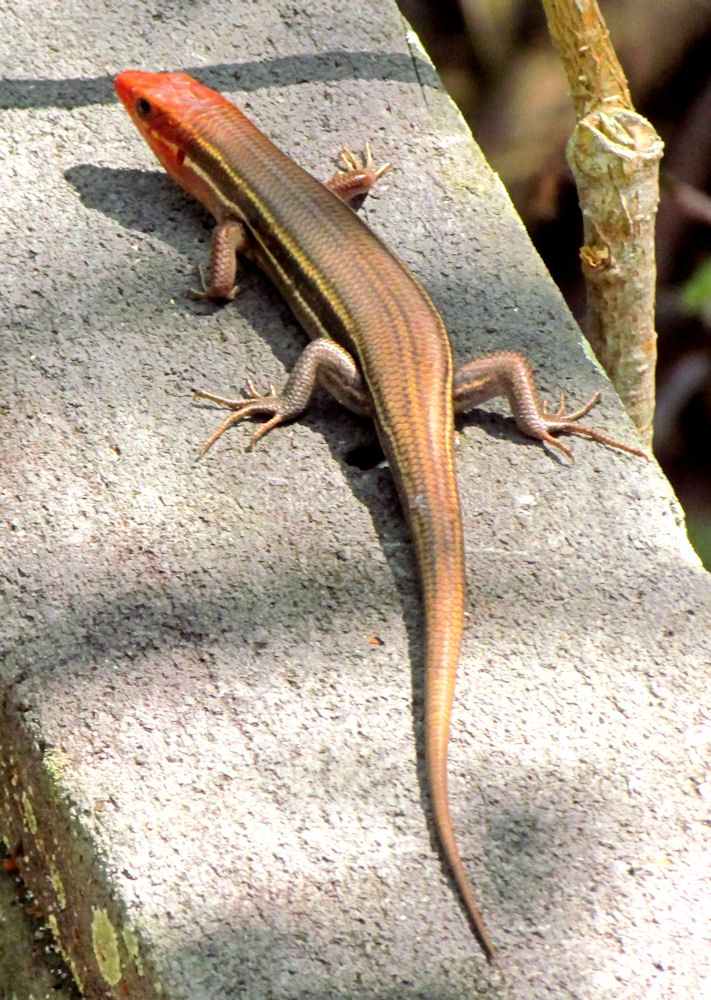There are 14 lizards that you can come across in Louisiana. If you’re wondering what lizards you can expect to see when in Louisiana or you’re curious as to the lizard your pet just dropped at your feet, then continue reading to find out more.
Are There Poisonous Lizards In Louisiana?
None of the local Louisiana lizards are poisonous, with the exception of the broad-headed skin, which releases a toxin if your pet ingests it.
It is very important to educate children on the fact that lizards can and will bite if they feel threatened and they carry disease, which means you must wash your hands if you handle any lizard to reduce the risk of spreading salmonella.
Lizards In Louisiana?
The fourteen lizards you may come across when in Louisiana, includes:
1. Slender Glass Lizard

Scientific name: Ophisaurus attenuatus.
Common name: slender glass lizard.
The slender glass lizard is a legless lizard with yellow or brown bodies with six stripes, along with a mid-dorsal stripe. They have white specs on their scales, which can form a stripe.
They grow up to 22 inches (0.91m). The tail makes up two thirds of the body length.
They have pointed noses.
These are fast-moving lizards and if captured, they will break a piece of their tail to distract their predators as they escape.

They can be found in burrows that have been made by other animals, often using the burrows for hibernation.
They are very active during the day.
When they break their tails, the part will grow back, but it will be shorter with each break.
They will very seldom bite, even when threatened, and may even stay still to blend in with the surrounding vegetation.
2. Eastern Glass Lizard

Scientific name: Ophisaurus ventralis.
Common name: eastern glass lizard.
Eastern glass lizards can grow up to 43 inches (108cm) with their tail making up the majority of their total length.
They do not have a mid-dorsal stripe, but they do have some irregular white markings on their necks and on the posterior corners of the scales.
As they age they develop a pattern of longitudinal dark lines. It’s not uncommon for older lizards to have green coloration on the top and yellow on their belly.

The Eastern glass lizards can be found throughout the United States including Louisiana, Oklahoma, Virginia, South Florida, Missouri, and more.
3. Green Anole

Scientific name: Anolis carolinensis.
Common name: Green anole, Carolina anole, Carolina green anole, American anole, American green anole, North American green anole, red-throated anole, American chameleon.
Green anoles are smallish lizards that have very slender bodies and long heads with pointed ridges which can be seen between the eyes.
Males are larger than the female with a large bright red dewlap. Females have smaller dewlaps, which are lighter in color from pale pink to white.
An adult male anole can grow up to 8 inches in length, of which around seventy percent of the length is made up of tail.
They are native to North American and are often found in trees or on the ground, hiding among the shrubs.
Green anoles are also common in urban areas and can be seen basking on fences and steps. They prefer a forest habitat with plenty of brush clearings.
4. Brown Anole

Scientific name: Anolis sagrei.
Common name: brown anole, Cuban brown anole, De la Sagra’s anole.
Brown anoles are light brown with dark brown and black markings on their backs, along with tan to light colored lines on their sides.
Their dewlaps range from orange-red to orange with males growing to around 9 inches (22.9cm).
They have a ridge on their tail which travels to the head.
Females can be identified by the brown strip that runs down the length of their backs, which isn’t featured on the males.
Further Reading – Differences between green anoles and brown anoles.
5. Mediterranean House Gecko

Scientific name: Hemidactylus turcicus.
Common name: Mediterranean house gecko, Turkish gecko, moon lizard.
Mediterranean house geckos are common in most parts of the world, including Louisiana.
They have rounded noses with moderate body ad limbs. Their bodies look like they are covered in tiny granules. They are usually gray or light brown in color with a transparent belly.
They are nocturnal and will head into the darkness if they feel threatened.
They are seen on their own or in small groups.
6. Sri Lankan Spotted House Gecko

Scientific name: Hemidactylus parvimaculatus.
Common name: Sri Lankan spotted house gecko.
The Sri Lankan spotted house gecko comes from Sri Lanka and Southern India.
They have been introduced throughout the world including Bangkok, Australia, and Louisiana, where they are common near Jefferson Parish.
7. Prairie Lizard

Scientific name: Sceloporus undulatus.
Common name: eastern fence lizard, prairie lizard, fence swift, gray lizard, northern fence lizard, pine lizard.
The prairie lizard (Sceloporus undulatus), also known as the Eastern fence lizard is a medium-sized lizard found in forests, rock piles, and stumps and logs.
These lizards can grow up to 7.5 inches (19cm) in total length, including the tail.
Their coloration is gray or brown with a dark line that runs down near the back of the thigh. Females are gray with dark lines on the back, white bellies with black flecks, and pale blue on the belly and throat.
Males, on the other hand, are brown in summer and green/blue to black on their sides and throat.
Further Reading –13 lizards with blue bellies.
8. Coal Skink

Scientific name: Plestiodon anthracinus.
Common name: coal skink.
Coal skinks grow to 7.1 inches (18cm) in total length, including their tail.
They have light stripes that go onto the tail with broad dark lateral stripes which are around four scales in width.
Males have red coloration on the side of their heads during the breeding season.
They prefer humid regions with wooded areas and loads of leaf litter.
They can swim and will hide in the water, under a stone if chased.
9. Common Five-lined Skink

Scientific name: Plestiodon fasciatus.
Common name: (American) five-lined skink, blue-tailed skink (for juveniles) and red-headed skink (for adults), eastern red-headed skink.
The common five-lined skink is a small lizard growing up to 8.5 inches (21.5cm) in total length, this includes the tail.
Young lizards are brown or black with five yellow to white stripes and a bright blue tail. The tail color fades as the common five-lined skink ages.
Adults are usually a uniform brown color.

The common fiv-lined skink lives on the ground and prefers wooden habitats that are moist with ample cover. They can often be found in rocky areas.
10. Southeastern Five-lined Skink

Scientific name: Plestiodon inexpectatus.
Common name: southeastern five-lined skink.
The Southeastern five-lined skink has five narrow lines that run down their bodies, fading with age. The middle stripe is narrower than the others. They have distinct brown areas between the stripes.
When they are young, they have bright blue tails, which fade as they get older. The stripes become more red to orange as they get closer to the head.

These skinks can be found throughout the southeastern United States, often found near freshwater with ample vegetation.
11. Broad-headed Skink

Scientific name: Plestiodon laticeps.
Common name: broad-headed skink, broadhead skink.
The broad-headed skink is one of the largest skinks in the United States growing up to 13 inches (33cm) in total length.
These lizards get their names from their triangular-shaped heads and wide jaws.
Adults are olive-brown to brown in color with orange heads, which are displayed during the breeding season.
Females have five light stripes down the back, while juveniles have bright blue tails, which fade with age.

These skinks prefer humid forest areas with plenty of leaf litter, though they can be found in urban areas.
They are the skink that will spend most of their time in trees, where they sleep, find shelter, and hunt for food.
Futher Reading – 10 lizards with red / orange head in the United States.
12. Prairie Skink

Scientific name: Plestiodon septentrionalis.
Common name: Prairie skink.
Prairie skinks are small lizards that grow to 9 inches (22cm) in total body length, including their tails.
They are tan or brown in color with darker coloration on their sides with light stripes down the side of their backs.
Juveniles have bright blue tails, which fade with age.
These are excellent at burrowing and will hibernate in burrows.
They are secretive and are very seldom seen in the open.
13. Little Brown Skink

Scientific name: Scincella lateralis.
Common name: Little brown skink, ground skink.
The little brown skink is one of the smallest reptiles you will find in North America.
They grow up to 5.5 inches (14.5cm) in total length and are a brown to copper color with yellow or white bellies.
They have short legs with an elongated body.

They can be found throughout the Eastern United States, where they make their habitat in forests, hedgerows, and on the edges of ponds and streams.
14. Six-lined Racerunner

Scientific name: Aspidoscelis sexlineatus.
Common name: six-lined racerunner.
Six-lined racerunners can be black, brown, or dark green in color. They have six yellow or green-yellow stripes that run all the way down their body from their head right down to their tails.
Females tend to have a white belly, while males may have a pale blue belly. Males have a pale green throat.
These are slender-bodied lizards with their tails making up the majority of their total body length.
These lizards are insectivores and are very fast-moving, reaching speeds of 29 kilometers / 18 miles per hour. They can head to cover very quickly and are wary in nature.
The six-lined racerunner can be found in a wide variety of habitats, including woodlands, floodplains, rocky outcrops, and grasslands. They prefer lower elevations where there is dry soil.